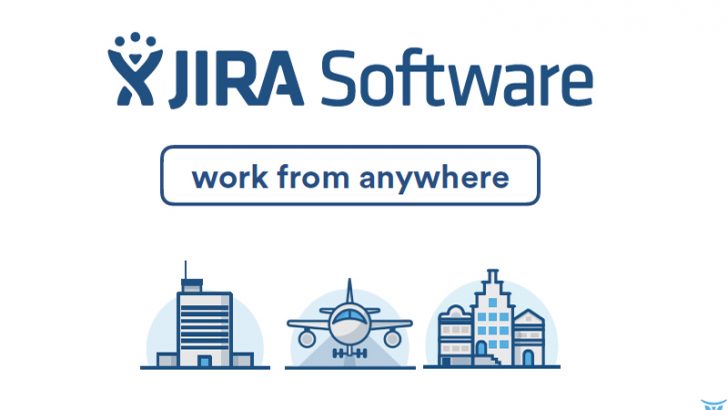
This week has seen Atlassian’s Atlas Camp hit Barcelona. For customers and developers using JIRA it meant a lot of big news about product features over the next year. The response from the audience was good. Not the whooping and cheering led by PR teams that you get at some conferences but a lot of very happy and positive customers.

Delegates at Atlas Camp were introduced to a number of enhancements to Jira by several of the product teams. First up was Dave Meyer, Senior Product Manager, JIRA Software to talk about the JIRA Software API. He started by saying: “We started before Atlas Camp last year and it is now ready to go. We have added new UI modules and plug-in points.” Among the list of new features that Meyer reeled off to the audience were improvements to the way sprints were handled and in particular additional elements to boards. In the latter, Meyer said that they were already seeing customers building to the APIs and delivering a range of new add-ons. This wasn’t the only place where new add-ons were appearing.
“We realised that we needed to unlock add-ons for Jira software. We’ve been working to make the whole JIRA Platform open. This has led to a range of new features. We’ve now added customer fields in Atlassian Connect. This is in beta and it was the number one requested feature. We have also added closer support for JQL which will enable you to integrate more closely with JIRA .”
One of the big things that Atlassian has done is what they have been telling customers to do for years and use Atlassian Connect. Meyer told the audience: “Over 130,000 people use an Atlassian Connect add-on every day in JIRA software.” With the news that Atlassian had returned over $120 million in sales of add-ons to its ecosystem in the last year, this number went some way to showing just how well sales were going.
Meyer then addressed what he called a difficult problem for customers whether to use Scrum or Kanban. Having made the case for each of them he then announced what Atlassian have been calling internally KanPlan or Planning in Kanban. It takes the planning element of Scrum and allows developers using Kanban to start assigning rankings to new features.
The response from the audience was overwhelmingly positive. The product is still a labs feature at the moment but Meyer expects it to be available in beta soon but didn’t give a date for production. He did say that it was the second highest requested feature with 881 votes.
JIRA Service Desk gets a makeover and new APIs

Announced last year, JIRA Service Desk has become the fastest selling product in Atlassian’s history. There are now more than 15,000 teams using the product and, as Shihab Hamid, Principal Product Manager, Atlassian was quick to tell the audience: “an increasing number of those teams come from outside of IT.” This is interesting because JIRA Service Desk is, at its most basic, a fully ITIL compliance service desk product.
The big news was Hamid announcing: “JIRA Service Desk Connect, a new integration architecture to allow add-ons to be developed for the product.” This is based on the recent addition of a REST API for JIRA Service Desk and wil enable developers to take advantage of the automation inside the tool.or developers to build add-ons.
Habib gave three examples of how this could work for a customer. The first would be to use the API to get information about an SLA. This can then be used to compare SLA information against the contract. The data can be used to open a ticket where there is a problem and this, in turn, can generate an alert and notification to the team responsible for managing the SLA.
Another example shown on stage revolved around customer management. This could involve using an automated system to take a customer call that would start by capturing the call as a voice file appended to the customer account. The system would then transcribe the call into the customer file for the next member of the call team to read and deal with. It could be extended into Altas CRM by getting the details on previous customer tickets, the customer’s company and ensure that the call handler has all the data they need to handle the call.
The third example was around Asset Management. This is something that will certainly gain interest because it is more than just a simple list of assets. Using the Insight Discovery plug-in customers can now import data on all their assets. There are a number of products that can do this but in common with some of the graph database-based asset management tools, Insight Discovery provides a graphical explorer showing the assets and their usage. This is particular important for teams managing assets and networks as it helps them map bottlenecks and remove older equipment without impacting services.
A new focus on mobile
Atlassian has supported mobile through its web interface to date. It has now announced that it will support a new native mobile experience. This will work with both its JIRA (issue and project tracking) and Confluence (team collaboration) tools.
For JIRA Service Desk users the mobile app is more than just an endpoint for notifications. It allows users to track key issues and apply filters so that they only see what is relevant to them. They can also use it to file new tickets themselves which then syncs back to the system through both the cloud and server-based products.
Users of Confluence get even more interactivity. If they are mentioned in a conversation on HipChat, Atlassians real-time communications solution, they get a notification in the app. This allows them to immediately join the conversation or just see what is being said. For widely dispersed project teams this means that the collaboration breaks down the distance barrier and resolves the problem of key information being lost in email chains.
Confluence mobile app users are also able to see when any new documents or information is added to their projects. They can open documents, comment on them, add new data and save them for later. When working on requirements gathering with users this has the benefit of ensuring that new requirements or changes are captured immediately without waiting until someone gets back to the office.
The mobile app is available on iOS now with a promise that an Android app will be shipping soon. There was no date on exactly how soon but given the speed with which Atlassian is updating its products that is likely to be in the next couple of months,
Conclusion
Atlassian has made a lot of announcements at Atlas Camp. Some have been covered in its press release and others in its blogs. What is evident from watching the audience and talking to customers and partners is that there is a very high level of belief in where Atlassian is going. It is wholly focused on opening up all its tools by providing APIs. Where it does that it also encourages the development of add-ons that are sold through its marketplace.
It will be interesting to see the growth of add-ons built using JIRA Service Desk Connect. With Atlassian announcing that this is not just an IT tool there is a lot of scope for developers to look at new areas where JIRA Service Desk can be used. With Atlassian focused on the core product and features, adding in functionality such as the Insight tool for asset management is a pure partner play.
The move to a native mobile experience is also long overdue but given the other things that Atlassian has been delivering perhaps there is room for some slack here. What will be carefully watched is how long it takes for the Android version to appear and what other mobile OS will eventually be supported.


























